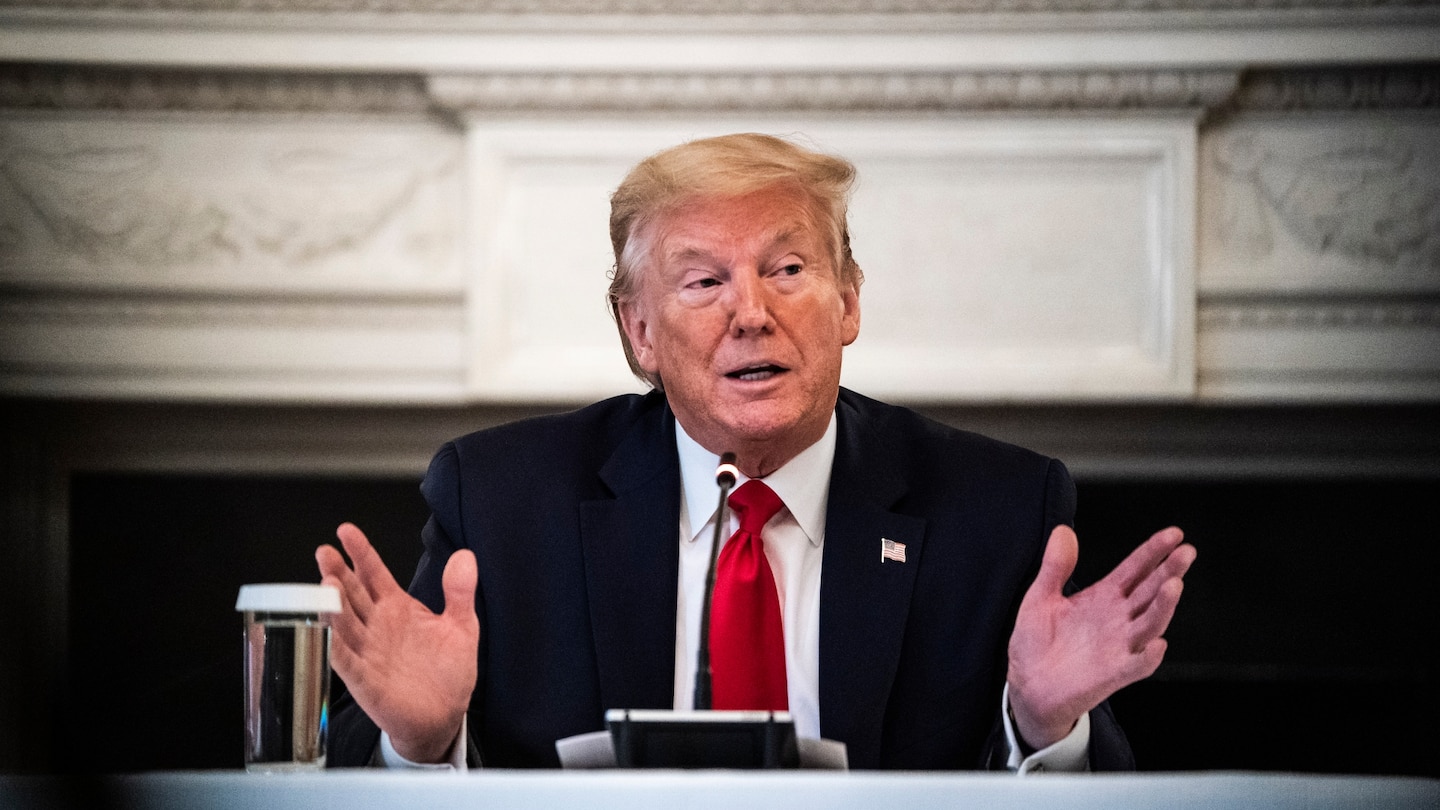Even Trump’s revisionist claims about the coronavirus disappearing are probably wrong

That is not what happened.
As it became obvious that it wasn’t happening, Trump pulled a rhetorical move familiar to fifth-graders everywhere: He was right because technically it will go away someday. Never mind that he was clearly suggesting — over and over — that everything that needed to be done was being done and that this would happen even in the absence of a vaccine. (See the video above.) No, Trump would now like the nation to believe that he was simply making a casual observation about the life cycle of viruses.
He said it to Fox News’s Chris Wallace in an interview that aired Sunday. Wallace presented Trump with his past comments about the virus going away.
“I’ll be right eventually. I will be right eventually,” Trump said. “You know I said, ‘It’s going to disappear.’ I’ll say it again.”
“It’s going to disappear, and I’ll be right,” Trump added.
It’s as though Franklin Roosevelt had gotten on the radio on Dec. 1, 1941, and informed the public that any threat of Japanese attack would simply dissipate — and then, after Pearl Harbor, insisted that he meant over the long term because technically all wars eventually end.
Except that not all wars necessarily end. And, to the topic at hand, not all viruses just go away.
It’s admittedly dumb to treat Trump’s revised argument as sincere, because it isn’t. The president wasn’t telling the nation on Feb. 10 that the virus would go away in April because he meant that it would disappear someday. He said it would go away in April.
But because he has pivoted and because his defenders, adept at updating their scripts, are doing the same, it’s worth pointing out that even this talking point is wrong.
The Centers for Disease Control and Prevention identifies four pandemics in the past 100 years or so. There was the 1918 flu pandemic (or, as Trump inexplicably claims, 1917), a version of the H1N1 influenza virus. There was an H2N2 pandemic in 1957 and 1958, and an H3N2 pandemic a decade later. Then there’s the H1N1 strain that emerged in 2009 and has become a focus of the president.
Trump’s rhetoric would suggest that those pandemics ended because the viruses died out. But none of them did.
The 1918 H1N1 strain evolved over time into a less dangerous form, meaning that descendants of it still circulate today, as the CDC notes. The annual vaccines created to limit the spread of the seasonal flu include protections against iterations of the 1918 virus.
The 1957 H2N2 strain had a slightly different fate. It circulated for years after the pandemic first emerged but was then displaced — by the H3N2 virus that prompted the 1968 pandemic. That virus continues to circulate today.
The 2009 H1N1 virus was, happily, less deadly and less contagious than the novel coronavirus, making comparisons between the government response to it and to the current pandemic tricky. But, as you might expect, it, too, continues to circulate.
Again: This doesn’t mean that these viruses pose the same risk as does the current coronavirus and necessitate the same response. Each caused a pandemic because of its novelty, spreading broadly through a population that had no ability to resist its spread given that no one had immunity through prior exposure or through vaccination. By now, that’s not true for the prior pandemic viruses that are again included in seasonal vaccines, diminished in their power or limited in their ability to spread. It remains true, though, for the coronavirus.
At some point, the coronavirus will similarly diminish as a risk to the public. Maybe that will be because of a vaccine. Maybe it will happen without a vaccine, as Trump has said, although that will require a lot of infections to build antibodies — and a lot of deaths. Maybe it will fade as a threat because of focused containment efforts, although the experiences of other countries suggest that good news about the decline of the virus can quickly become bad news about its resurgence.
And maybe — maybe! — it will someday be eradicated entirely, somehow. It’s possible, although recent history suggests that’s unlikely. Maybe in that sense, Trump will be “right,” under the revised definition of “right” he’s hoping we apply to his past comments.
Of course, there’s a chance he might be proved right as the coronavirus is eradicated the way the H2N2 strain from 1957 was eradicated: by a new deadly pandemic.






